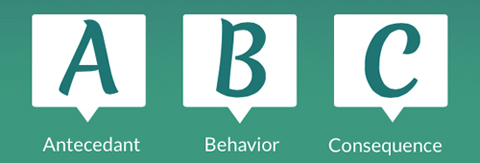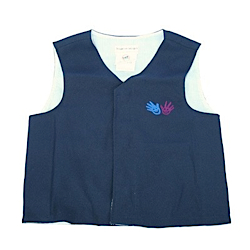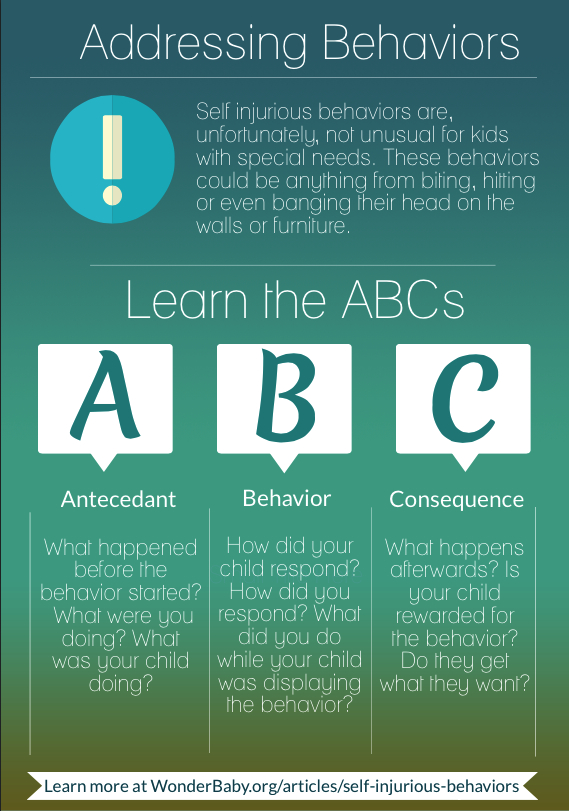6 Strategies for Addressing Self-Injurious Behaviors

This post may contain affiliate links; please see our terms of use for details.
Self injurious behaviors are, unfortunately, not unusual for kids with special needs. These behaviors could be anything from biting, hitting or even banging their head on the walls or furniture.
Watching your child hurt himself is one of the worst things to experience as a parent. You want to protect your child, help them and comfort them… but they may push you aside (maybe even hurting you in the process) just so they can continue with the behavior.
Below are some tips to help you sort through why your child is displaying the behavior and how you can help them stop. If you have further advice, please respond in the comments below. We can all learn from each other!
1. Keep Him Safe
Before you move any further in finding a way to help your child, the first most important thing is to do your best to keep him safe. If he’s banging his head this might mean keeping his area padded or wearing a helmet; if he’s biting himself it might mean having him wear thick long sleeve shirts.
No, this is not the answer to your problem… but you need to reduce the pain and damage as much as possible before you can move forward.
2. Gather a Team
Do not try to solve a huge behavior problem on your own. Do your best to gather a strong support team of friends, family, therapists and doctors. Your pediatrician should be the first go-to person on your team (and if they aren’t, then consider finding a new one). From there you can follow up with medical specialists, behaviorists, occupational therapists and your child’s teacher if they are in school.
Do your best to find a group of smart and supportive people who can help you tackle the problem, mostly because this is the best approach for your child but also because you will need to be able to step back at times and let someone else take over.
3. Is He in Pain?
The first advice you’ll always hear is that you want to rule out any physical reasons why your child is hurting himself. Is he in pain? Is he responding to teething pain or even something like migraines and he just doesn’t know how to deal with the pain?
We have a terrific pediatrician who works with all of our son’s specialists. She takes a very holistic approach while each specialist obviously focuses just on their area of expertise. My son’s pediatrician will start by mapping out all the possible areas that may be causing issues then helps us set up tests and appointments with specialists to check everything out.
This is also a good way to begin a strong medical record documenting the behavior and the solutions you’ve tried.

4. Keep a Record: Look at the ABCs of Antecedents, Behavior and Consequences
Proponents of Applied Behavior Analysis (ABA) will recommend that you keep a log and document the injuries, the antecedents, behavior (especially the degree of violence of behavior as not every bite, for example, has the same power behind it) and the consequences of the behavior. And do this not just for him but for you too. What were you doing before the biting started? What are you doing while he is biting? How do you behave afterwards?
Documenting the behavior will allow you to track progress, indifference or escalation in his responses to your attempts to influence the behaviour and will be a great assistance to any professionals you bring on board your team.
5. Try Sensory Soothing

My son does have a lot of sensory issues and one of his ways to deal with this in the past was by biting his arms (luckily for us that didn’t last very long). Usually now when he feels overwhelmed by his environment he’ll laugh hysterically. Yes, that’s much better than biting! But it can also be incredibly disruptive – imagine your child laughing hysterically to the point of hyperventilating for 8 hours straight until 4am and you’ll see why!
We have worked very closely with his occupational therapist and have some tricks we can use to calm him, like sensory brushing, deep pressure massage, joint compressions, vibrations or (his current favorite) a weighted vest or blanket. These kinds of techniques really help him when he’s distressed.
6. Increase Communication
If the response is behavioral and a response to pain, then usually you’ll see the injuries sparked by a frustration – not getting his way, not being able to say something, etc – and he doesn’t know how to handle it. Behaviorists will often recommend redirecting the behavior (give him a chewy to bite instead, for example) and teach him correct responses.
If his frustrations come from not being able to communicate, working with a speech therapist and a communication device, even something simple like a yes/no switch, might help.
There are so many different routes to take, but if you have a good team including an OT, a behaviorist and a speech therapist you should be able to come up with a plan that works so you can get your happy kid back!

Read this article in Spanish: Lea este articulo en Español
Read this article in Arabic: قراءة هذا المقال بالعربية

Related Posts

Autism
Developing Time Management Skills in Children with Autism: 7 Tips
Learn how you can use structure and visual aids to help your child with autism learn time management skills.

Autism
Occupational Therapy for Children with Autism: How It Can Make a Difference
Children with autism face challenges in many different areas. Occupational therapy can help children address these difficulties while having fun!

Behavior
Understanding Intermittent Explosive Disorder in Children
Are you worried about your child’s unexpected aggression and explosive behaviors? Learn how to support a child with intermittent explosive disorder.